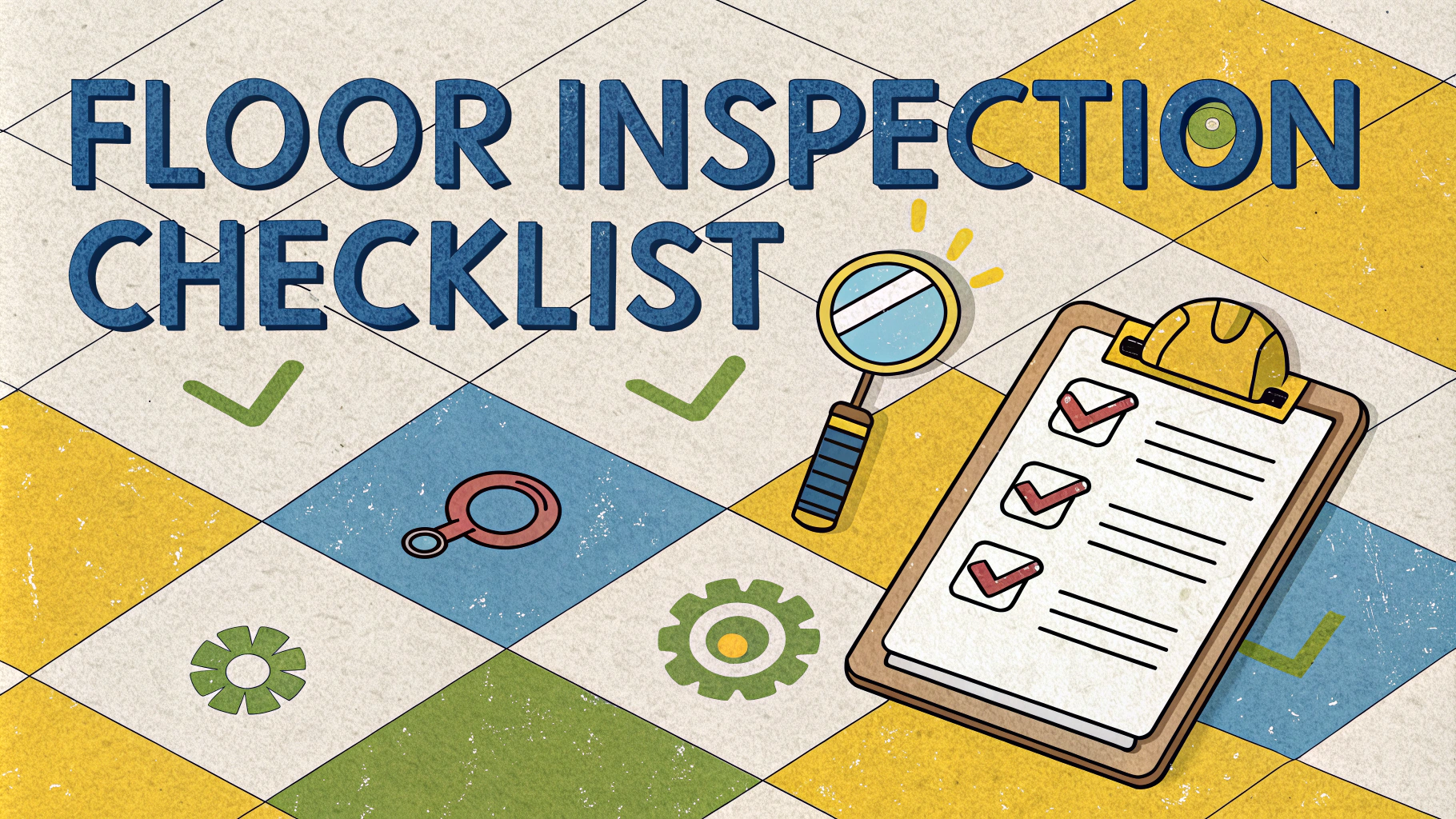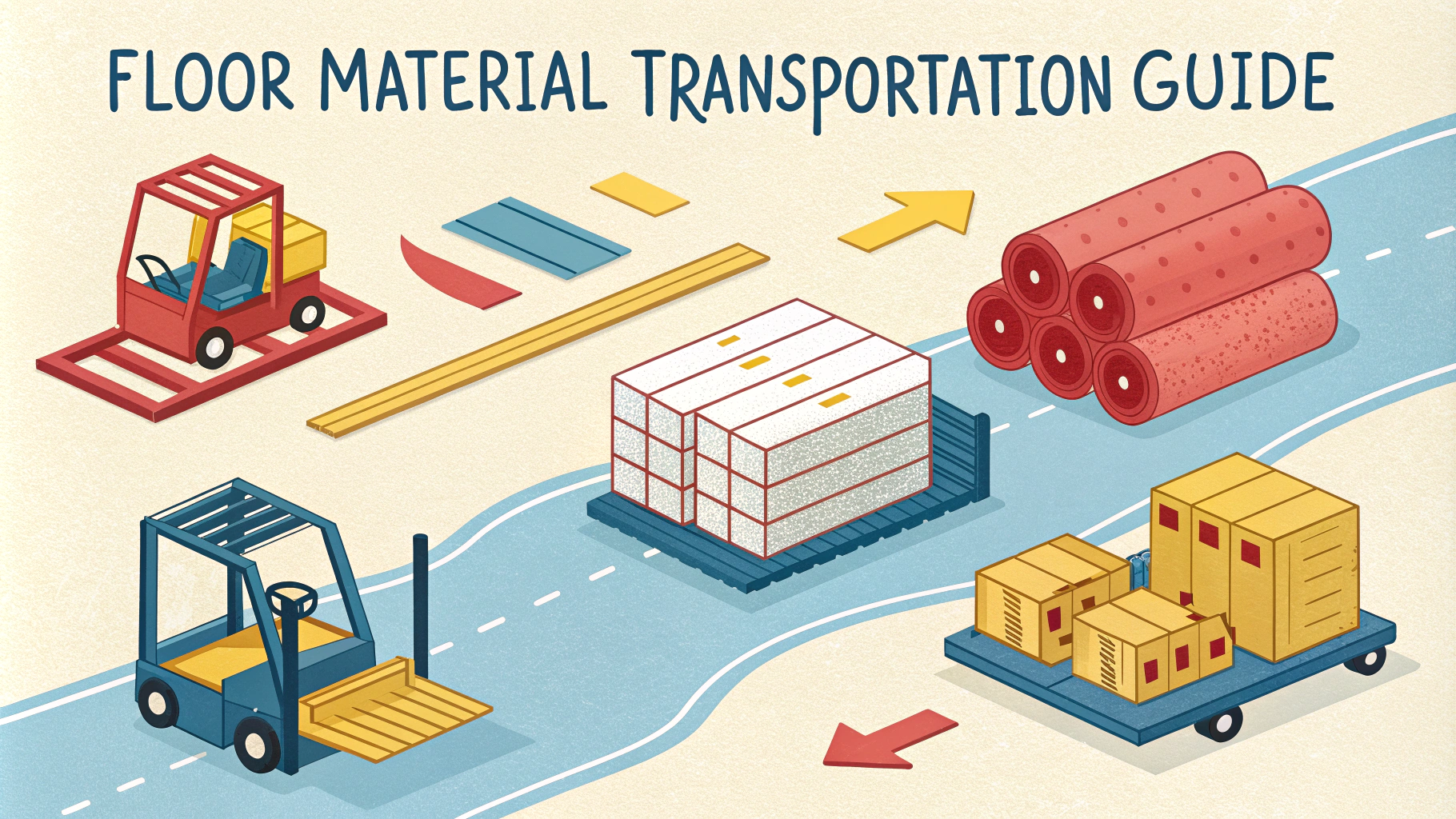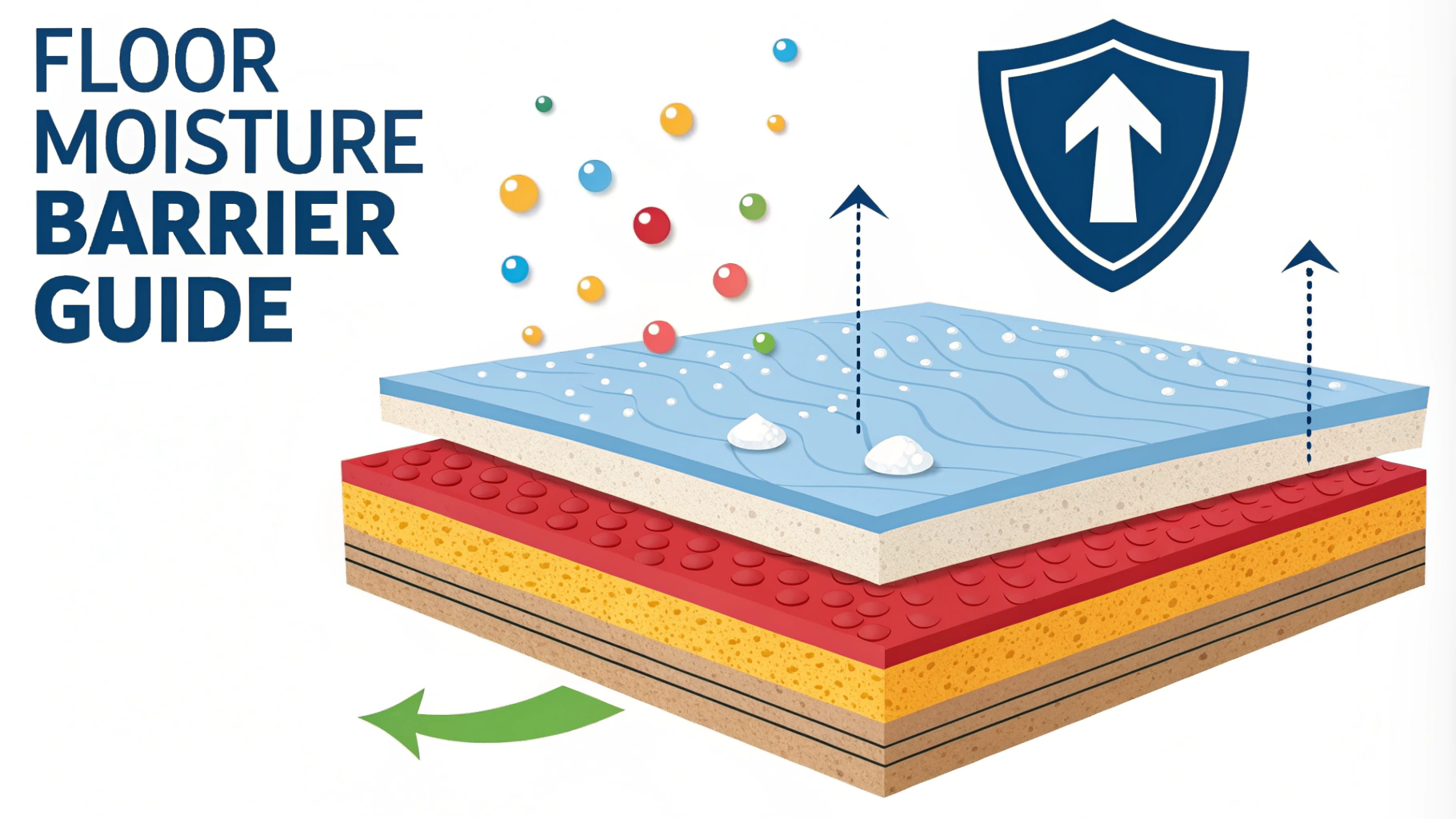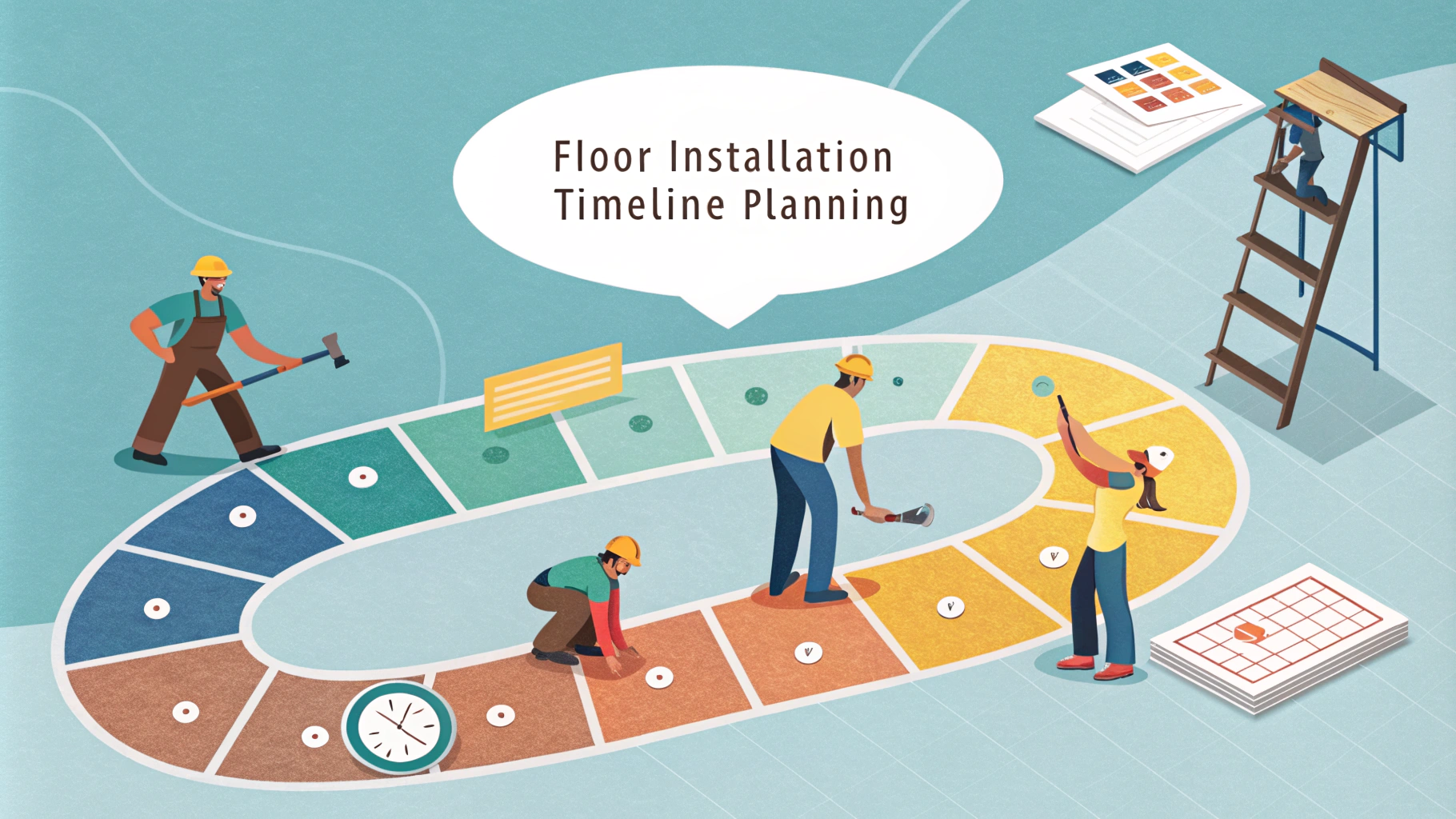Installing new flooring can significantly impact your budget, but there are proven ways to reduce costs without compromising quality.
Professional flooring installation typically accounts for 40-50% of your total flooring project costs, making it a key area for potential savings.
This quick guide explores practical strategies to lower installation expenses while maintaining professional standards.
Prep Work You Can Do Yourself
- Remove existing flooring and baseboards
- Clean and level the subfloor
- Move furniture and appliances
- Dispose of old materials
Smart Material Selection
Choose readily available materials that don’t require special ordering or shipping costs.
Consider luxury vinyl planks or laminate flooring, which often cost 30-40% less to install than hardwood.
Select materials that can be installed directly over existing floors when possible.
Timing Your Project
Schedule installation during off-peak seasons (typically January-March) when contractors offer better rates.
Book your installation during mid-week rather than weekends to potentially save 10-15% on labor costs.
Cost-Effective Room Selection
- Start with square or rectangular rooms
- Avoid rooms with multiple corners or curved areas
- Choose spaces without built-in cabinets or fixtures
Bulk Buying Benefits
Purchase flooring materials for multiple rooms at once to qualify for volume discounts.
Buy 10% extra material instead of the standard 15% overage recommendation if your rooms are simple shapes.
Installation Layout Optimization
| Layout Type | Labor Cost Impact |
|---|---|
| Straight lay | Lowest cost |
| Diagonal lay | 20-25% more |
| Herringbone pattern | 40-50% more |
Contractor Selection Tips
- Get at least three detailed quotes
- Ask about package deals for multiple rooms
- Check for certified installers who offer warranties
- Request references and verify previous work
Money-Saving Installation Methods
Choose floating floor installation over glue-down methods when suitable for your selected material.
Consider installation over existing flooring where appropriate, saving demolition and disposal costs.
Next Steps for Your Project
Contact local flooring contractors through the National Wood Flooring Association directory (www.nwfa.org) for certified professionals.
Request detailed quotes that break down material and labor costs separately.
Schedule site visits during off-peak hours for more thorough assessments and potentially better rates.
Maintenance Planning
Establish a maintenance routine before installation to protect your investment and extend flooring lifespan.
- Request care instructions from manufacturers
- Purchase recommended cleaning supplies in bulk
- Document warranty requirements
- Schedule professional cleanings annually
Additional Cost-Saving Opportunities
Material Storage
Store materials on-site for 48-72 hours before installation to prevent expansion issues and callbacks.
Warranty Registration
Register product warranties immediately to avoid future out-of-pocket repair expenses.
- Document installation date and contractor information
- Keep all receipts and warranty paperwork
- Take photos before, during, and after installation
Managing Installation Timeline
Create a detailed project schedule to minimize disruption and avoid costly delays.
- Coordinate delivery windows with installers
- Plan room accessibility during installation
- Allow extra time for unexpected issues
- Schedule final inspection walk-through
Making Your Investment Last
Implement these strategies to maximize your flooring investment and ensure long-term savings:
- Keep detailed maintenance records
- Address repairs promptly to prevent larger issues
- Follow manufacturer guidelines strictly
- Consider professional maintenance contracts
By following these cost-saving measures and maintenance strategies, your new flooring can provide lasting value while staying within budget. Remember to balance initial savings with long-term durability for the best return on investment.
FAQs
- What are the most cost-effective flooring materials available?
Vinyl, laminate, and certain ceramic tiles are typically the most budget-friendly flooring options, with vinyl sheet flooring being particularly economical per square foot. - Can I install flooring myself to save money?
Yes, certain types like click-lock laminate, peel-and-stick vinyl tiles, and floating floors can be installed by DIYers with basic tools and careful attention to manufacturer instructions. - How can I reduce waste and save money during floor installation?
Carefully measure and plan the layout, order 10% extra instead of the standard 15-20%, and save larger scraps for repairs or smaller spaces like closets. - What’s the most cost-effective time of year to purchase flooring?
Late December through January and late May through June typically offer the best deals, as retailers clear inventory for new stock. - How can I save money on floor preparation?
Remove old flooring yourself, clean and level the subfloor, and repair minor issues before professionals arrive to reduce labor costs. - What hidden costs should I watch out for in flooring installation?
Common hidden costs include subfloor repairs, moisture barrier installation, trim and molding replacement, furniture moving, and old flooring disposal fees. - Is it cheaper to repair or replace existing flooring?
Minor repairs are typically more cost-effective for hardwood floors that can be refinished. However, extensive damage or worn-out laminate/vinyl usually requires more economical full replacement. - How can bulk purchasing reduce flooring costs?
Buying larger quantities often qualifies for bulk discounts, and purchasing all materials at once can reduce delivery fees and ensure consistent color matching. - What are the best ways to maintain new flooring to avoid future replacement costs?
Regular cleaning with appropriate products, using furniture pads, placing mats at entrances, and addressing spills immediately can significantly extend flooring lifespan. - Should I remove baseboards before installation to save money?
Removing baseboards yourself can save labor costs and allows for a more professional finish, though quarter round molding can be a cost-effective alternative if keeping existing baseboards.







